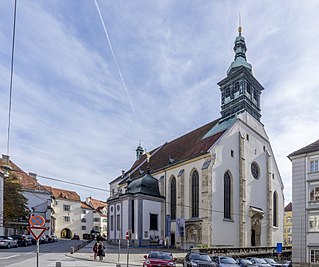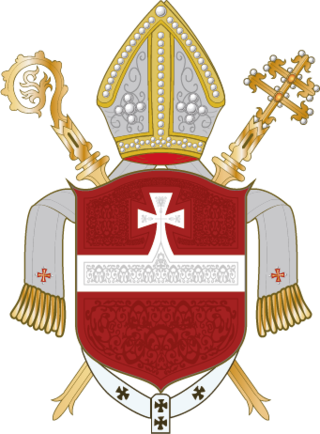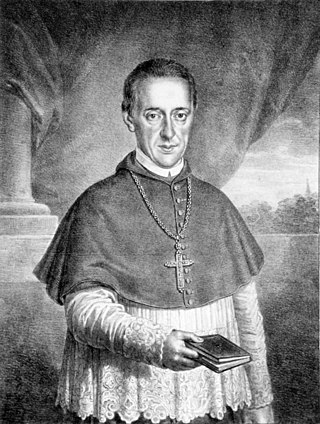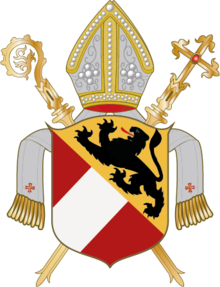
The history of Styria concerns the region roughly corresponding to the modern Austrian state of Styria and the Slovene region of Styria (Štajerska) from its settlement by Germans and Slavs in the Dark Ages until the present. This mountainous and scenic region, which became a centre for mountaineering in the 19th century, is often called the "Green March", because half of the area is covered with forests and one quarter with meadows, grasslands, vineyards and orchards. Styria is also rich in minerals, soft coal and iron, which has been mined at Erzberg since the time of the Romans. The Slovene Hills is a famous wine-producing district, stretching between Slovenia and Austria. Styria was for long the most densely populated and productive mountain region in Europe.

The Prince-Archbishopric of Salzburg was an ecclesiastical principality and state of the Holy Roman Empire. It comprised the secular territory ruled by the archbishops of Salzburg, as distinguished from the much larger Catholic diocese founded in 739 by Saint Boniface in the German stem duchy of Bavaria. The capital of the archbishopric was Salzburg, the former Roman city of Iuvavum.

Blessed Anton Martin Slomšek was a Slovene Roman Catholic prelate who served as the Bishop of Lavant from 1846 until his death. He served also as an author and poet as well as a staunch advocate of the nation's culture. He served in various parishes as a simple priest prior to his becoming a bishop in which his patriotic activism increased to a higher degree since he advocated writing and the need for education. He penned textbooks for schools including those that he himself opened and he was a vocal supporter of ecumenism and led efforts to achieve greater dialogue with other faiths with an emphasis on the Eastern Orthodox Church.

The Bishop of Gurk is the head of the Roman Catholic Diocese of Gurk, which was established by Archbishop Gebhard of Salzburg, in 1072, as the first suffragan bishop in the Duchy of Carinthia.

The Diocese of Graz-Seckau is a Latin Church diocese of the Catholic Church comprising the Austrian state of Styria. It is part of the Ecclesiastical Province of Salzburg.

Berchtesgaden Provostry or the Prince-Provostry of Berchtesgaden was an immediate principality of the Holy Roman Empire, held by a canonry led by a Prince-Provost.

The Prince-Bishopric of Bamberg was an ecclesiastical State of the Holy Roman Empire. It goes back to the Roman Catholic Diocese of Bamberg established at the 1007 synod in Frankfurt, at the behest of King Henry II to further expand the spread of Christianity in the Franconian lands. The bishops obtained the status of Imperial immediacy about 1245 and ruled their estates as Prince-bishops until they were subsumed to the Electorate of Bavaria in the course of the German Mediatisation in 1802.
Bishops of the Wrocław Bishopric, Prince-Bishopric (1290–1918), and Archdiocese.

The Diocese of Gurk-Klagenfurt is a Latin Church diocese of the Catholic Church covering the Austrian state of Carinthia. It is part of the ecclesiastical province of Salzburg. Though named after Gurk Cathedral, the bishop's see since 1787 has been in Klagenfurt.

Prince-provost is a rare title for a monastic superior with the ecclesiastical style of provost who is also a Prince of the Holy Roman Empire (Reichsfürst), holding a direct vote in the Imperial Diet assembly coequal to an actual Prince-abbot, as in each case treated below.

The Archdiocese of Vienna is a Latin Church archdiocese of the Catholic Church in Austria. It was erected as the Diocese of Vienna on 18 January 1469 out of the Diocese of Passau, and elevated to an archdiocese on 1 June 1722. The episcopal see is situated in the cathedral of S. Stephen in Vienna.

Leopold Ernst von Firmian was an Austrian bishop and cardinal.

Leopold Anton Eleutherius Freiherr von Firmian was Bishop of Lavant 1718–24, Bishop of Seckau 1724–27 and Prince-Archbishop of Salzburg from 1727 until his death.

Josef Franz Anton Graf von Auersperg was an Austrian bishop, prince bishop of Passau and cardinal. He was a member of the House of Auersperg.

St. Andrew's Church, Sankt Andrä im Lavanttal, formerly Sankt Andrä Cathedral is a Roman Catholic church in Sankt Andrä im Lavanttal at the southern end of the Lavant Valley, Carinthia, Austria. For more than 600 years, between 1228 and 1859, it was the cathedral of the Diocese of Lavant.

Leopold Maximilian Graf von Firmian was Auxiliary Bishop in Passau and Titular Bishop of Tiberias from 1797, from 1800 to 1816 Bishop of Lavant, was appointed Archbishop of Salzburg in 1816, but in 1818 was only confirmed as administrator of the Archdiocese of Salzburg. From 1822 to 1831 he was Prince-Archbishop of Vienna.
von Firmian may refer to:
















